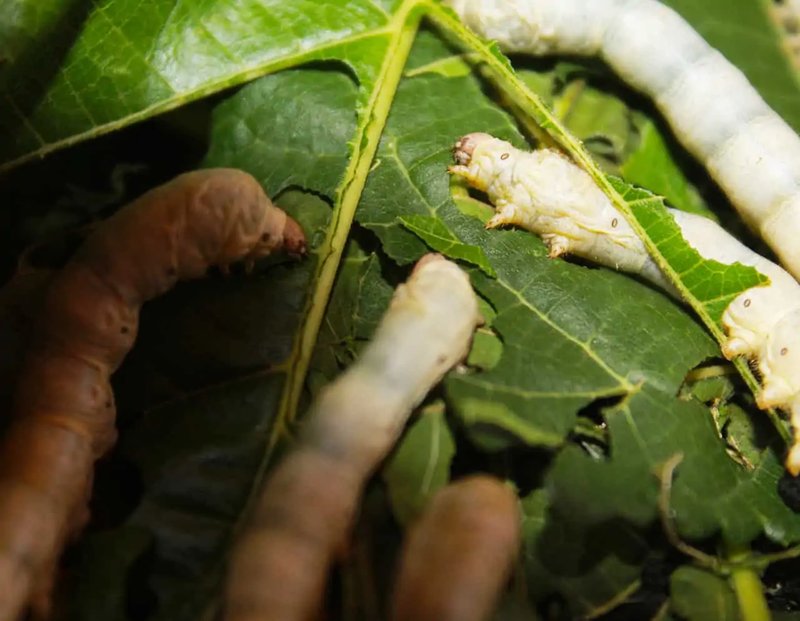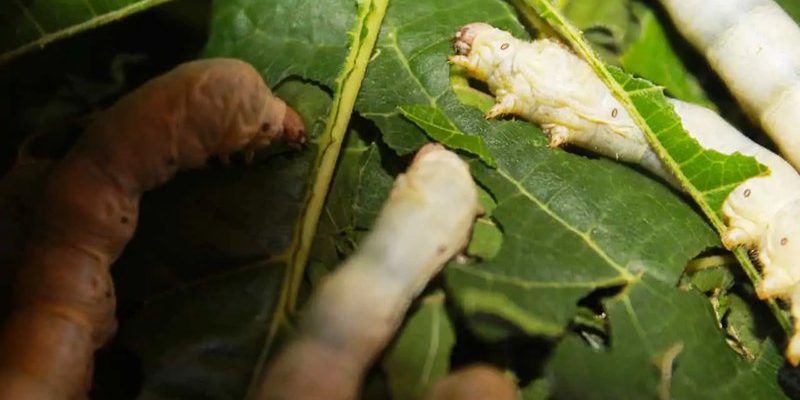
Imagine the buzz in your classroom as students gather around to watch these fascinating creatures grow from eggs to larvae and finally into mature moths. It’s like witnessing a real-life science experiment unfold before their eyes. So, if you’re ready to take the plunge into the world of silkworms, let’s dive into the step-by-step process of starting a silkworm breeding club in schools.
Why Start a Silkworm Breeding Club?
You might be wondering why silkworms? Well, for starters, they offer a unique way to teach students about biology and ecology. Silkworms, scientifically known as *Bombyx mori*, have a simple life cycle that includes four stages: egg, larva (caterpillar), pupa, and adult moth. This makes them an ideal subject for classroom observation.
Moreover, raising silkworms can spark conversations about sustainability and the environment. Students can learn about the importance of insects in our ecosystem, and how silk production impacts our world, both positively and negatively. When students understand where their materials come from, they’re more likely to appreciate and advocate for sustainable practices. Plus, it’s a fun and engaging way to promote teamwork and responsibility among students.
Lastly, creating a silkworm breeding club opens up avenues for creativity. Students can explore various projects—whether it’s creating art from silk cocoons or writing reports on the silkworm’s life cycle. This cross-disciplinary approach makes science feel alive and connected to their everyday lives.
Gathering Resources for Your Club
Starting a silkworm breeding club requires a few essential materials and resources. Here’s what you’ll need to get going:
- Silkworm eggs: You can purchase silkworm eggs online from specialized suppliers. Make sure to read the reviews and select a reputable source.
- Food: Silkworms eat mulberry leaves, which can be tricky to source. You could either grow your own mulberry trees or find suppliers that sell fresh leaves or silkworm chow.
- Habitat: Create a suitable environment for your silkworms. This can include containers or boxes that allow for good airflow.
- Temperature and humidity controls: Silkworms thrive in specific conditions. Maintaining the right temperature (around 70-80°F) and humidity can help ensure their health.
- Educational materials: Gather books, videos, and online resources about silkworms, silk production, and related environmental topics.
Once you have these resources, you’re already on your way to creating an engaging environment for your club members. Remember, it’s about fostering curiosity and enthusiasm!
Organizing Club Meetings
Now that you have your resources, it’s time to think about organizing club meetings. Here’s how to create an inviting atmosphere for students:
1. **Choose a regular meeting time:** Consistency is key. Whether it’s every Wednesday after school or once a month, find a schedule that works for most students.
2. **Set a welcoming tone:** Start each meeting with a fun icebreaker related to silkworms or nature. This builds camaraderie and keeps the energy positive.
3. **Plan activities:** Incorporate hands-on activities, such as observing the life cycle, feeding the silkworms, or even starting a journal to log their growth. You could also organize field trips to local farms or research centers that focus on silk production.
4. **Involve guest speakers:** Bring in local experts or teachers to discuss topics related to silkworms and sustainability. This can enrich students’ experiences and provide them with real-world insights.
By structuring your meetings this way, you’ll foster an inclusive and engaging environment where students feel comfortable exploring and learning.
Engaging Students Through Hands-On Learning
Hands-on learning is the heart of any successful club, especially one focused on silkworms. Here are some fun and educational activities you can include:
– **Lifecycle observations:** Encourage students to document each stage of the silkworm life cycle. Create charts or journals where they can sketch and write about what they observe. This not only enhances their observational skills but also reinforces their learning.
– **Cooking with silk:** Did you know that silk isn’t just for clothing? Students can explore how silk can be used in food, particularly in traditional dishes. You could even have a tasting session using mulberry leaves.
– **Art projects:** Use silk cocoons to create art pieces. Students can paint, decorate, or even use cotton to create silk-inspired crafts. This adds a creative flair to your club and promotes artistic expression.
– **Science experiments:** Encourage students to conduct small experiments related to silk production, such as testing different conditions to see how it affects silkworm growth.
By keeping activities hands-on and engaging, you ensure that students remain excited about the breeding club and what they can learn from it.
Building a Community and Promoting Awareness
A silkworm breeding club isn’t just about raising silkworms; it’s about building a community. Here’s how to foster a sense of belonging:
– **Create a digital space:** Start a private group on social media or an online platform where students can share their experiences, photos, and insights. This encourages communication and fosters friendships.
– **Participate in school events:** Look for opportunities to showcase your club’s efforts during school fairs or science nights. Set up a booth to display your silkworms and share what you’ve learned. This promotes awareness and can attract new members.
– **Collaborate with other clubs:** Partner with environmental clubs or science clubs to co-host events. This not only builds camaraderie but also allows students to learn from one another.
– **Celebrate milestones:** Whether it’s the first emergence of a moth or a successful silk harvest, celebrate these milestones together. Recognizing achievements fosters a sense of pride and accomplishment.
When students feel like they belong to a community, they’re more likely to engage actively and contribute meaningfully to the club.
Challenges to Anticipate and How to Overcome Them
Starting a silkworm breeding club can come with its own set of challenges. Here are some common hiccups you might face and how to tackle them:
– **Sourcing materials:** Finding fresh mulberry leaves can be tricky. Consider growing your own trees or connecting with local nurseries. Alternatively, explore online platforms where you can purchase silkworm chow, which is easier to source.
– **Insect health:** Sometimes, silkworms can get sick or die off. This can be disheartening for students. Focus on educating them about common issues and how to prevent them. Keeping a clean habitat and monitoring conditions can make a huge difference.
– **Time commitment:** Balancing schoolwork with club activities can be tough. Encourage students to work in teams, so they can share responsibilities and find time to nurture their silkworms while keeping up with their studies.
– **Interest waning:** If excitement fades, introduce new topics or projects to reignite enthusiasm. Share success stories from other breeding clubs or incorporate guest speakers to spark fresh interest.
By planning for these challenges, you’ll create a resilient club that keeps students engaged and learning.
Celebrating Success and Learning Together
At the end of the day, starting a silkworm breeding club in schools is all about celebrating learning and the joy of nature. Take time to recognize the accomplishments of your members, whether it’s successfully raising silkworms or creating inspiring projects.
Host an end-of-term showcase event where students can present their work and experiences. This not only highlights their hard work but also encourages them to reflect on what they’ve learned.
Here’s the thing: fostering an environment where curiosity thrives not only benefits students but also strengthens the community. By encouraging hands-on experiences, teamwork, and open discussions, you’ll nurture a love for learning that extends beyond the classroom.
Starting a silkworm breeding club is a rewarding journey that can enrich students’ lives while teaching them important lessons about nature and sustainability. So roll up your sleeves, gather some friends, and get ready to embark on this exciting adventure!

